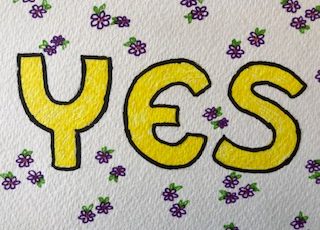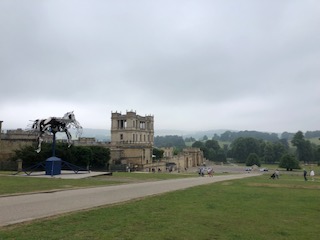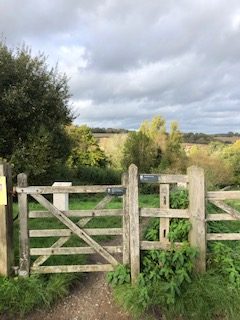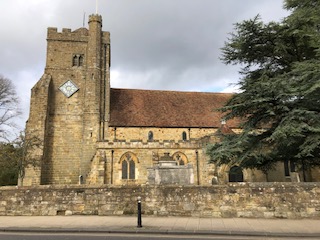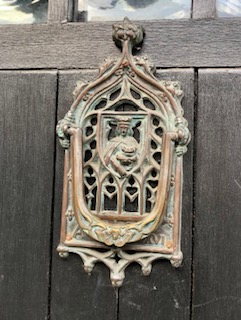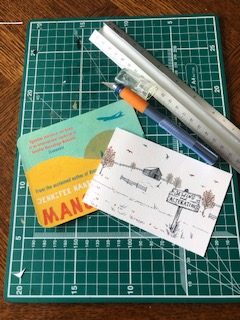Our recent trip to Northern Italy has left my head positively fizzing with the beauty of its art and architecture.
We had planned the break as an opportunity to meet up with very dear friends who live in Germany. We were twice blessed: with an amazing location and great companions to share it with.
Tempting though it is to make this a postcard account of a short but very full stay, I’d like to veer from the Tripadvisor mode and focus a little more on some of the less obvious aspects and the longer lasting impacts of such a adventure.
With our usual good luck, we were to arrive in Venice on the day of a nationwide transport strike, which meant we could get to Venice airport but not the city nor our planned destination of Padua. Hmm. We were not to be deterred and my husband sorted a hotel in Venice and a vaporetto to get us there. Costly, but worth it.
The floating world
We sped into Venice, James Bond style, the boat barely skimming the water as it jetted along. With the sun setting on the lagoon, the city looked especially ethereal, rising dimly out of the sea on fragile foundations.
It was indeed a floating world – both in the literal and metaphorical sense. Venice is held barely above the water and floods often. Even if one has never visited the city, it floats in our imaginations as a dreamscape of mystery and beauty.
Yet, it also matches the Japanese idea of ‘the floating world’. Originally, it was a Buddhist concept of life as difficult and transitory, yet the meaning was inverted during the Edo period to mean the passing pleasures of the hedonist: beautiful women and the entertainment wealth could purchase.
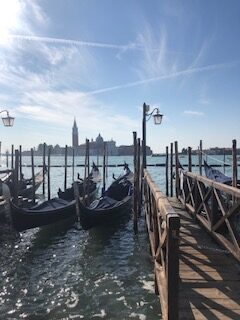
Image: Karen Costello-McFeat
For those of us fortunate enough to be able to afford such travel, Venice is a pleasure ground of magnificent architecture and art; designer shopping and elegant concerts. For those working in Venice, it is perhaps a different story. Whilst the grandeur of its buildings boasts the success of the few, the narrow, dark and sometimes sinister back streets and the ripe smell of the canals come evening, suggests a different story. This dualism was encapsulated by a middle-aged man wheeling the excessive luggage of two Japanese tourists over a steep, stepped bridge. Loui Vuitton meets luggage trolley.
Because grand though it is, Venice is a city of stark contrasts and once you move away from the tourists in St Mark’s Square and into the back streets, the more obvious this becomes. However, these quieter parts were no less beautiful for their simplicity. Every so often, we would come across a barely populated piazza with a few trees and a central well. Washing hung on long lines from the balconies and perhaps a small dog would pass by on its walk.



Awe-inspiring though Venice is, it is still a city of commerce and glaringly demonstrated wealth. It was certainly worth a visit – but one will do.
Vicenza – architectural wonders
Our German friends, Sarah and Michael had driven to Padua to meet us, so we had the advantage of transport. Both my friends and I had been encouraged to visit the nearby town of Vicenza for its ancient architectural beauty and the famous Rotunda.
The town itself is an architect’s dream with wide streets and a large imposing piazza in the centre. It is also home to the first indoor theatre – Teatro Olimpico. Renaissance frescoes and vaulted covered walkways aside, it is a thriving, modern industrial centre. Tourists from abroad are few and I suspect that they like it that way. When we went for a coffee, the waiter spoke no English and my very limited Duolingo Italian finally felt worth the effort.

The main draw of Vincenza is its buildings and it is the show case of the influential architect, Palladio. From his name is drawn Palladian – that symmetrical, open design which harks back to that of classical Rome and Greece. His style reached its height of popularity in the 18th century, two centuries after he designed the Rotunda, and is still relevant today.
Chioggia – The working man’s Venice
Taking advantage of the fine weather, our friends took us to Chioggia the following day. Like Venice, it is filled with canals and surrounded by the lagoon, but unlike Venice, it is quiet and unhurried. We arrived on a Monday, so many of the shops were closed and the cafes, bustling with locals from noon until two pm, suddenly emptied and closed. Dawdling as we were, we were fortunate to be given a table at 2.05! The kind waitress took pity on us and delayed the end of her shift until we were fed.




Chioggia is a port and fishing town with a small stretch of beach that attracts summer visitors. It is modest but pleasing with houses hugging the sides of canals and peaceful streets with flower-filled window boxes. My favourite place there was a tiny 14th century church. It was only one room and sparsely decorated, but it echoed with the prayers of centuries.
Padua – city of learning and pilgrimage
Our base was the magnificent city of Padua – home to the second oldest university in Italy and to innumerable awe inspiring churches including the Basilica di San Antonio.
It is a place of learning and is filled with young people who throng the streets going to lectures or perhaps taking an espresso and catching up with friends. When we were there, it was clearly graduation day and students, accompanied by proud parents and friends, wandered about wearing the laurel crown of the graduate.

Image: Karen Costello-McFeat
Padua is famous for its medical department and its scientific roots go back centuries. Copernicus was a student and Galileo a professor! It served as a catalyst for Renaissance thinking.
With science and medicine having such a strong presence, it is no wonder that the study of the natural world and especially its healing properties was of utmost importance. To further the aim of educating students, they built an exquisite apothecary garden.
The botanical gardens are still flourishing today and are a source of scientific study. While the core of the garden houses medicinal plants, more exotic species have been added since. It provides a welcome retreat from a busy world.



The medical museum in Padua is a wonder also. I only wish that I could have been taught the sciences in such an entertaining and interesting way.
Much of our stay was spent mooching about the gorgeous streets and stopping for coffee. But we devoted a fair amount of time visiting the innumerable stunning churches in the city. All were impressive, but only a few attended by more than half a dozen congregants.



Even the most famous church, The Basilica di San Antonio, was only moderately busy – but unlike other ‘tourist destination’ churches, this was peopled by nuns, pilgrims and those who came to pray. It was exquisitely beautiful with high vaulted ceilings, domes, elegant frescoes, marble marquetry and stonework. It was designed to be awe-inspiring, and it was. I loved the domed ceilings in deep blue scattered with stars, the trompe l’oeil marble scene behind the tomb of Saint Antony, the courtyard gardens outside the main building.
When I gazed at the craftmanship, I though of the hours or even years required to achieve the effects. I thought of the craftsmen toiling day after day in service to something greater than themselves. I thought of the thousands of people who came here looking for solace or hope or acceptance and felt that I was part of a very long chain of humanity.
And I felt that time had come full circle. Pilgrimage was the first form of tourism. Holiday comes from holy day and our leisure and spiritual practice are strangely combined. Whilst fewer of us believe in any formal or traditional way now, it does not mean that we don’t gain from our journeys.
We can be uplifted by a mountain or an exquisite work of art; we can connect with those who came before us and left us such treasures; we can learn so much about ourselves and the world.
My Italian trip has cemented my desire to do more creatively – to do it seriously and with commitment. Travel can be transformative if we allow it to be.
Or it can just be light and fun. Seeing friends and breaking bread (or eating pizza together) is also great. However you find your dolce vita – enjoy.

Image: Michael Meier

